
File Size: 2.84 MB
Feature Headlines
- IISG-P2D2 Partnership Promotes Medicine Collection
- No Bones About It: Easy Steps for Filleting Asian Carp
- Green Infrastructure Benefits Include Cost
- Teachers Engage in Lake Michigan Shipboard Science

Feature Headlines
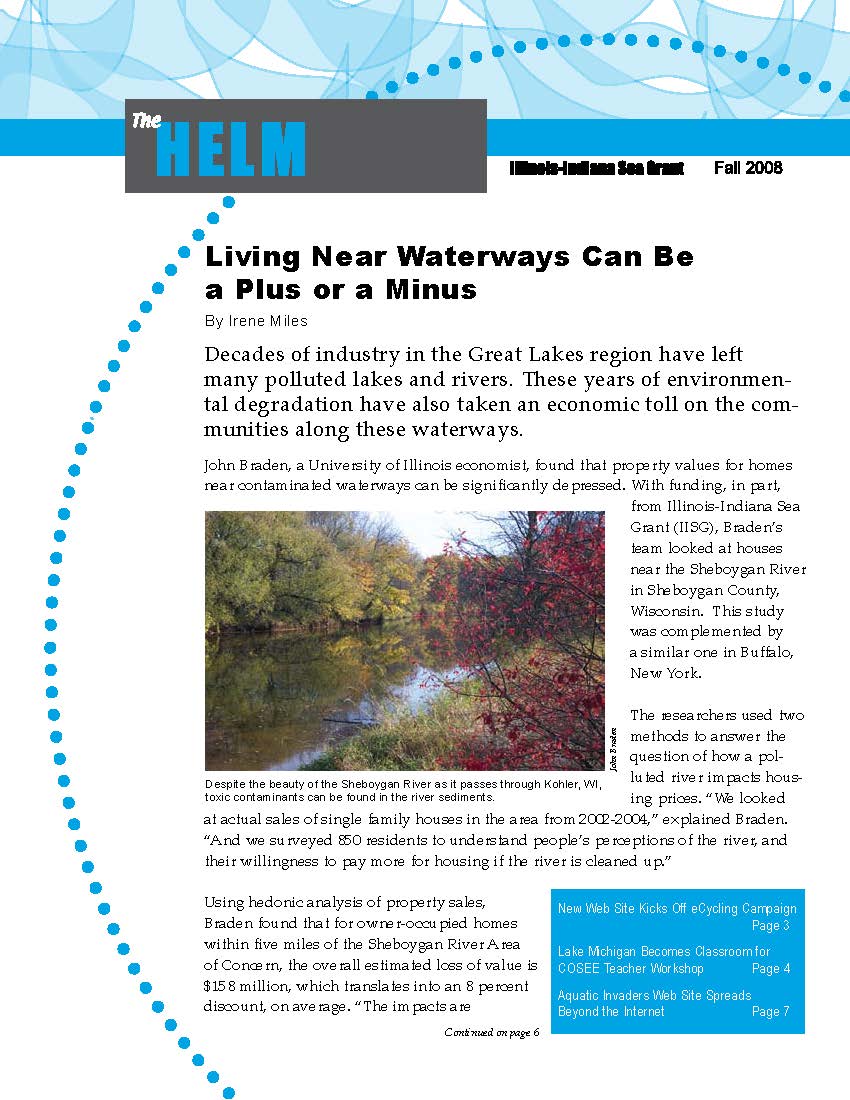
Feature Headlines
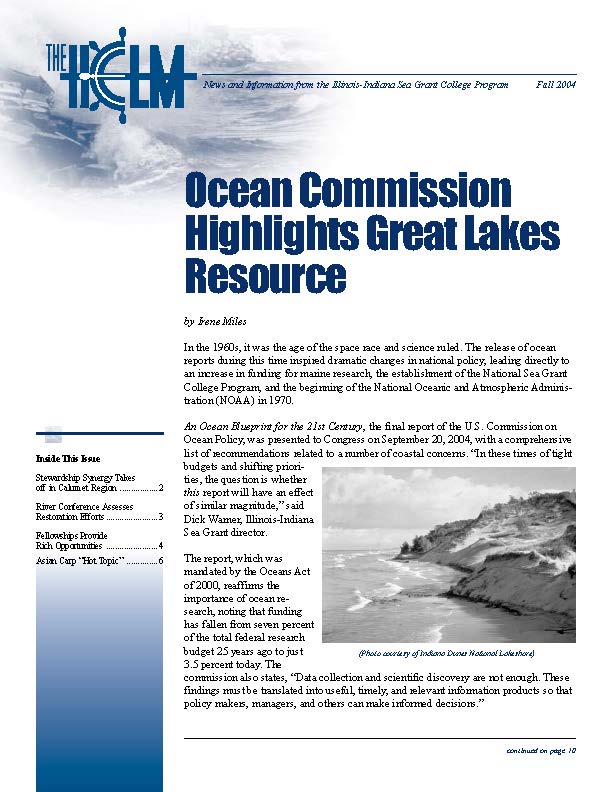
Feature Headlines
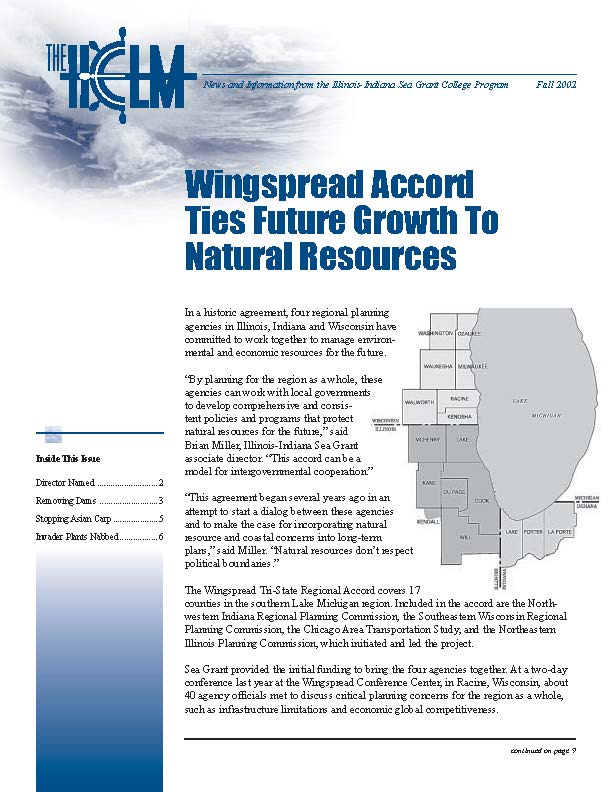
Feature Headlines
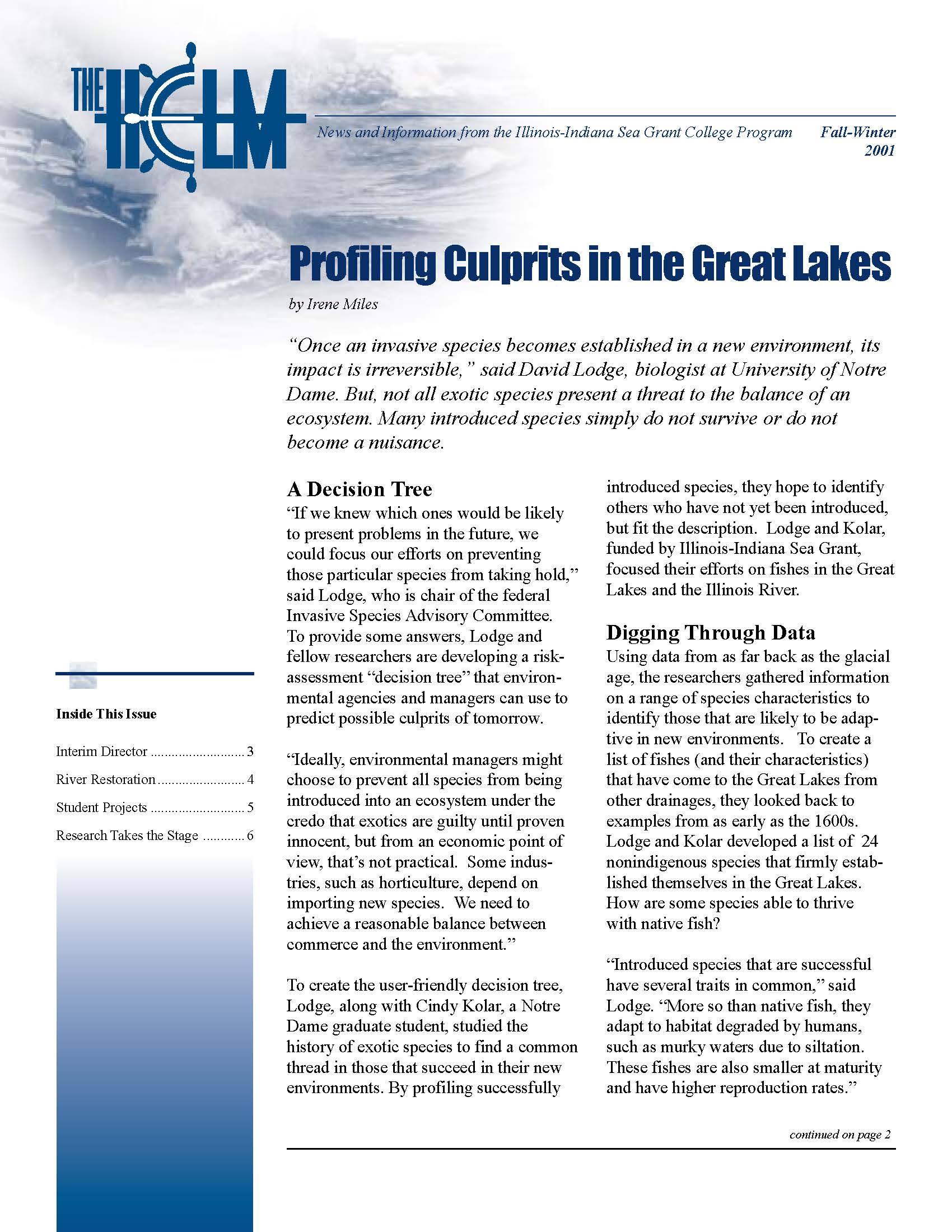
Feature Headlines
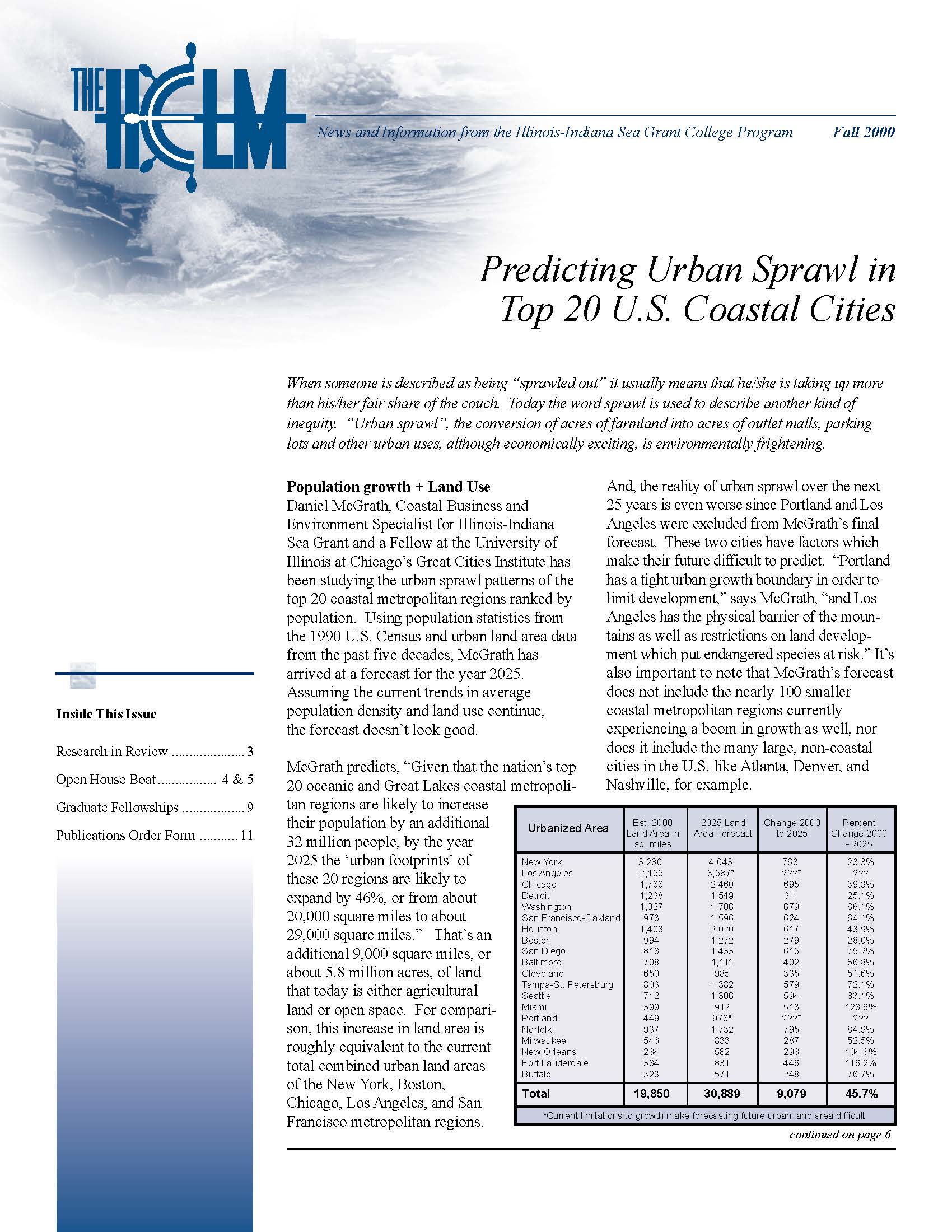
Feature Headlines

This is an annual summary of Illinois-Indiana Sea Grant success stories.
Flip through the magazine: https://issuu.com/iiseagrant/docs/thehelm-2021

Invasive crayfish represent an ongoing threat to aquatic ecosystems in the Laurentian Great Lakes region, and one of the major pathways of introduction is through the sale of live organisms to consumers (i.e., organism-in-trade pathways). This study investigated the live trade of crayfish in the Great Lakes region through a survey of crayfish retailers to understand sale and utilization of crayfish, as well as retailer sentiments about conservation and environmental stewardship. A database of 617 retailers across eight Great Lakes states was compiled and 123 retailers were contacted for the survey. Sixteen retailers who sold crayfish through the aquarium and bait trades completed the survey. Findings revealed that retailers rely on their wholesalers for information about crayfish, signaling a critical need for increased outreach efforts directed towards these suppliers. Moreover, retailers expressed a need for clear and consistent communication regarding regulatory changes. The results underscore the importance of effective communication and education within the crayfish supply chain to mitigate the risk of future invasive crayfish introductions in the Great Lakes region.

This brochure describes the importance of native crayfish and the impacts of invasive crayfish. It provides audiences such as aquarium hobbyists, teachers, anglers and cooks with information to help them responsibly purchase and contain crayfish to prevent the spread of invasive species.
Ta publikacja jest dostępna w języku polskim na ALE CHWYT! Jak odizolowoć hodowanego raka i chronić środowisko przyrodnicze.
该出版物的中文版可在以下网址获取 举手之劳!如何“围堵”淡水龙虾 及保护自然区域
Publicacion en español está ¡ES FACILÍSIMO! Cómo contener a su cangrejo de río y protegerlas áreas naturales.